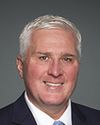Thank you.
Danielle, Laura, Sheila, anyone...?
Evidence of meeting #29 for Veterans Affairs in the 43rd Parliament, 2nd Session. (The original version is on Parliament’s site, as are the minutes.) The winning word was ptsd.
A recording is available from Parliament.
5:15 p.m.
Conservative
5:15 p.m.
Executive Director, National Service Dogs
I can go next.
In terms of that piece of it, suicide is a very individual thing, but making sure that our team is suicide aware and responsive, and trauma-informed, is part of what we do at NSD. In terms of the anecdotal evidence we have seen from our clients and heard from our clients, the dogs give them back their routine and they put them on a healthier path on that routine.
Is that going to work 100% of the time with service dog users in the PTSD field? No, there are so many mitigating factors, comorbidities around addiction and other challenges that it's a multi-faceted puzzle, but the dogs certainly don't hurt, and in some cases, can be the difference between somebody wanting to continue or suiciding.
5:15 p.m.
Owner and Master Trainer, K-9 Country Inn Working Service Dogs
I totally agree, and I think one of the biggest things for the veteran or civilian with PTSD is that they disengage from society. What we have found with the dogs is that it helps them reconnect through training and through being with a group. It helps them find their voice and be part of something. It makes them feel that they're not alone.
That's where we have found the biggest change. They have someone there who they can count on all the time by their side, and it makes them more comfortable. Also, embarrassment is a huge part of it, and lots of people will not hug another person or talk to another person, but they will hug and talk to their dog.
5:15 p.m.
Conservative

John Brassard Conservative Barrie—Innisfil, ON
Sheila, do you have anything you want to add to that?
5:15 p.m.
Chair, Assistance Dogs International, North America
Yes, I have a few statistics for some things that just came out of the VA study that was released in early 2021. That VA study confirmed that there was a reduced suicide ideation and clinical depression in all veterans who had service dogs, as opposed to emotional support dogs. They also noted there was over a three-point improvement on the PTSD checklist, which is the test that's used widely to assess somebody's PTSD.
The last statistic or point that I want to bring up is from the annual suicide report at the VA. They are saying that although there's a prevalence of veterans with PTSD, regular treatment such as drugs and therapy doesn't do as well as it does with other mental health problems, so it's very interesting. I think that veterans knew this before we did, that a dog is what they need.
5:20 p.m.
Conservative

John Brassard Conservative Barrie—Innisfil, ON
Yes.
Thanks, everyone. This has been a really valuable session.
5:20 p.m.
Liberal
June 7th, 2021 / 5:20 p.m.
Liberal

Marie-France Lalonde Liberal Orléans, ON
Thank you very much, Chair.
First, I want to thank all of you for joining us today. For me, certainly, this discussion has been extremely valuable in helping me to better understand this issue.
Ms. O'Brien, you addressed some of the standards in the U.S.A. and your role and everything. What advice would you give us in Canada when it comes to establishing standards for service dogs here?
5:20 p.m.
Chair, Assistance Dogs International, North America
I think the best advice would be to utilize the PTSD standards that ADI has already worked on for eight years. Again, they don't deal with just dog training. They deal with all components that are involved in terms of these veterans with PTSD.
You know, we were talking about how a dog makes a difference in getting people out in the world, but if the dog is not the right kind of dog, it hurts the veteran. We have to be aware of that too. These standards cover all of that. They insist that you use a dog that invites the public in. If you have a dog that's snarling and has its hackles up, it will not invite the public in. One of the prime objectives for someone with PTSD is to interact with the public.
There are a lot of components to it. It's not just dog training. It's dog temperament. It's veteran readiness. Some veterans are not ready to have a dog at the point when they apply. They're just not. For example, they're addicted or just don't have enough get-up-and-go to be with a dog. You need to have the mental health component up there as well, so I would recommend that.
5:20 p.m.
Liberal

Marie-France Lalonde Liberal Orléans, ON
Thank you.
You might have informed us of this already, but I might not have quite understood. Who pays for the dog and their training in the United States, and how do you meet your demand?
5:20 p.m.
Chair, Assistance Dogs International, North America
All of the programs in ADI are non-profit. I can speak for the 106 programs that I oversee. They raise the funding themselves.
5:20 p.m.
Liberal

Marie-France Lalonde Liberal Orléans, ON
It's basically through fundraising activities and individuals supporting these initiatives regionally across the United States.
5:20 p.m.
Chair, Assistance Dogs International, North America
Yes.
I know this will shock you, but in my program it costs over $60,000 for one team. That's everything—flying the team in, training the dog, keeping the team accommodated. We have a larger program and dorm rooms.
It's $60,000 for every team and the veteran does not pay one cent.
5:20 p.m.
Liberal

Marie-France Lalonde Liberal Orléans, ON
I'm glad to hear that veterans are not footing the bill for this. Thank you for all the work that happens over there.
Mr. Cousineau, I represent Orleans, a community within the national capital of Ottawa. We have many veterans here. I don't come from a veteran's family, but I want to say from the bottom of my heart how appreciative we are of your service to our country, sir. Thank you for your testimony and for sharing.
I have a very quick question for you. My time is almost up, so please be brief. How would we know that someone needs a service dog instead of, for example, an emotional support animal?
5:25 p.m.
Co-Founder, Paws Fur Thought
Anyway, the short version is that a service dog is specifically task-trained to mitigate the disabling symptomatology that a handler has from their PTSD. That is why the prescriber guidelines are so important, because that is the linkage with the schools that are going to provide the training and marry the team up and get them pointed in the right direction.
There are approximately 53 different things that a service dog can do for PTSD. The problem is that three to five of those things are going to be the major ones that a veteran is going to deal with on a daily basis, and that's where we have to focus our efforts.
You can't teach a dog 53 commands that he isn't going to use, because after a few months the dog won't respond and the handler won't remember. It is absolutely imperative that the medical professionals become involved in this particular prescribing process, because if not, what they're saying is, “We know you do this amazing stuff, so just go do it,” without medical oversight. That doesn't make sense.
5:25 p.m.
Liberal

The Chair Liberal Bryan May
Thank you, sir.
Up next for two and a half minutes, we have MP Desilets.
5:25 p.m.
Bloc

Luc Desilets Bloc Rivière-des-Mille-Îles, QC
Thank you, Mr. Chair.
Before the chair cuts me off, I want to thank all the witnesses for a wonderful meeting.
Ms. MacKenzie, it seems clear that the demand cannot be met. There aren't enough dogs. Political will and money seem to be available.
What must be done? How can the demand be met? Is it a matter of providing more training?
5:25 p.m.
Owner and Master Trainer, K-9 Country Inn Working Service Dogs
We need testing for the dogs that are being trained by the trainers who are out there, and licensing. We need some kind of program where we can figure out how to—
5:25 p.m.
Bloc
5:25 p.m.
Liberal

The Chair Liberal Bryan May
I'm sorry to interrupt. Wait one second. We have a bit of a problem with translation. I'm just going to test right now.
Are we good? Luc, can you hear me being translated?
5:25 p.m.
Liberal

The Chair Liberal Bryan May
Okay.
Laura, do you want to start from the beginning? We will wind the clock back.
5:25 p.m.
Owner and Master Trainer, K-9 Country Inn Working Service Dogs
Sure.
What really needs to be done is to have some kind of testing so we can monitor the standards. There are trainers out there. We're not ADI accredited, but we are training to that standard. We need to have a testing and licensing program established so that these dogs can be tested with their handlers. Then you know that they're going to meet the standards of public safety.
Standards will not stop fake service dogs, because under the human rights law, right now, anyone can get a doctor's note and they can slap a vest on their dog and say they have a service dog. If we don't have any way to test this dog, there is no way to enforce it.
5:25 p.m.
Bloc

Luc Desilets Bloc Rivière-des-Mille-Îles, QC
Ms. O'Brien, drawing on your international or North American knowledge in this area, do you have any examples of countries that may not be meeting the demand but are at least trending toward a balance? If so, how are they doing it?